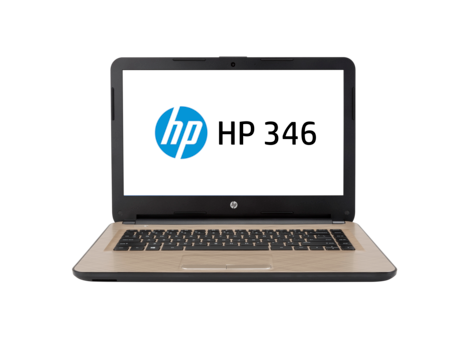64 Bit G25 Drivers
Microsoft gives you the 32-bit version of Windows 10 if you upgrade from the 32-bit version of Windows 7 or 8.1. But you can switch to the 64-bit version, assuming your hardware supports it.

If you had a 32-bit versions of Windows 7 or 8.1 installed on your PC and upgraded to Windows 10, Microsoft automatically gave you the 32-bit version of Windows 10. But, if your hardware supports using a 64-bit operating system, you can upgrade to the 64-bit version of Windows for free.

G25 Racing Wheel Support Register Your Product. To get the best customer care, product tips and more. Getting Started. Our top tips and questions to get you started.
Make Sure Your Processor is 64-bit Capable
64 Bit G25 Drivers For Windows 7
First thing’s first. Custom rom htc 650 price. Before even thinking of upgrading to 64-bit Windows, you’ll need to confirm that the CPU in your computer is 64-bit capable. To do so, head to Settings > System > About. On the right-hand side of the window, look for the “System type” entry.
You’ll see one of three things here:
- 64-bit operating system, x64-based processor. Your CPU does support 64-bit and you already have the 64-bit version of Windows installed.
- 32-bit operating system, x86-based processor. Your CPU does not support 64-bit and you have the 32-bit version of Windows installed.
- 32-bit operating system, x64-based processor. Your CPU supports 64-bit, but you have the 32-bit version of Windows installed.
If you see the first entry on your system, you don’t really need this article. If you see the second entry, you won’t be able to install the 64-bit version of Windows on your system at all. But if you see the last entry on your system—“32-bit operating system, x64-based processor”—then you’re in luck. This means you’re using a 32-bit version of Windows 10 but your CPU can run a 64-bit version, so if you see it, it’s time to move on to the next section.
Make Sure Your PC’s Hardware Has 64-bit Drivers Available
Even if your processor is 64-bit compatible, you might want to consider whether your computer’s hardware will work properly with a 64-bit version of Windows. 64-bit versions of Windows require 64-bit hardware drivers, and the 32-bit versions you’re using on your current Windows 10 system won’t work.
Modern hardware should certainly offer 64-bit drivers, but very old hardware may no longer be supported and the manufacturer may have never offered 64-bit drivers. To check for this, you can visit the manufacturer’s driver download web pages for your hardware and see if 64-bit drivers are available. You shouldn’t necessarily need to download these from the manufacturer’s website, though. They are likely included with Windows 10 or automatically will be downloaded from Windows Update. But old hardware—for example, a particularly ancient printer—simply may not offer 64-bit drivers.
Upgrade by Performing a Clean Install
You’ll need to perform a clean install to get to the 64-bit version of Windows 10 from the 32-bit one. Unfortunately, there’s no direct upgrade path.
Warning: Back up your important files before continuing and also make sure you have what you need to reinstall your programs. This process will wipe your whole hard disk, including Windows, installed programs, and personal files.
First, if you haven’t upgraded to Windows 10 yet, you’ll need to use the upgrade tool to upgrade. You’ll get the 32-bit version of Windows 10 if you were previously using a 32-bit version of Windows 7 or 8.1. But the upgrade process will give your PC a Windows 10 license. After upgrading, be sure to check that your current 32-bit version of Windows 10 is activated under Settings > Update & security > Activation.
Once you’re using an activated version of the 32-bit Windows 10, download the Windows 10 media creation tool from Microsoft. If you’re using the 32-bit version of Windows 10 at the moment, you’ll have to download and run the 32-bit tool.
When you run the tool, select “Create installation media for another PC” and use the tool to create a USB drive or burn a disc with Windows 10. As you click through the wizard, you’ll be asked whether you want to create 32-bit or 64-bit installation media. Select the “64-bit (x64)” architecture.
Next, restart your computer (you did back everything up, right?) and boot from the installation media. Install the 64-bit Windows 10, selecting “Custom install” and overwriting your current version of Windows. When you’re asked to insert a product key, skip the process and continue. You’ll have to skip two of these prompts in total. After you reach the desktop, Windows 10 will automatically check in with Microsoft and activate itself. You’ll now be running the 64-bit edition of Windows on your PC.
If you want to go back to the 32-bit version of Windows, you’ll need to download the media creation tool—the 64-bit version, if you’re running the 64-bit version of Windows 10—and use it to create 32-bit installation media. Boot from that installation media and do another clean install—this time installing the 32-bit version over the 64-bit version.
Image Credit: lungstruck on Flickr
READ NEXT- › How to Speed Up Your PlayStation 4’s Downloads
- › How to Disable the Login Screen’s Background Blur on Windows 10
- › How to Use All Linux’s Search Commands
- › How to See All Your Saved Wi-Fi Passwords on Windows 10
- › How Do Bone Conduction Headphones Work?